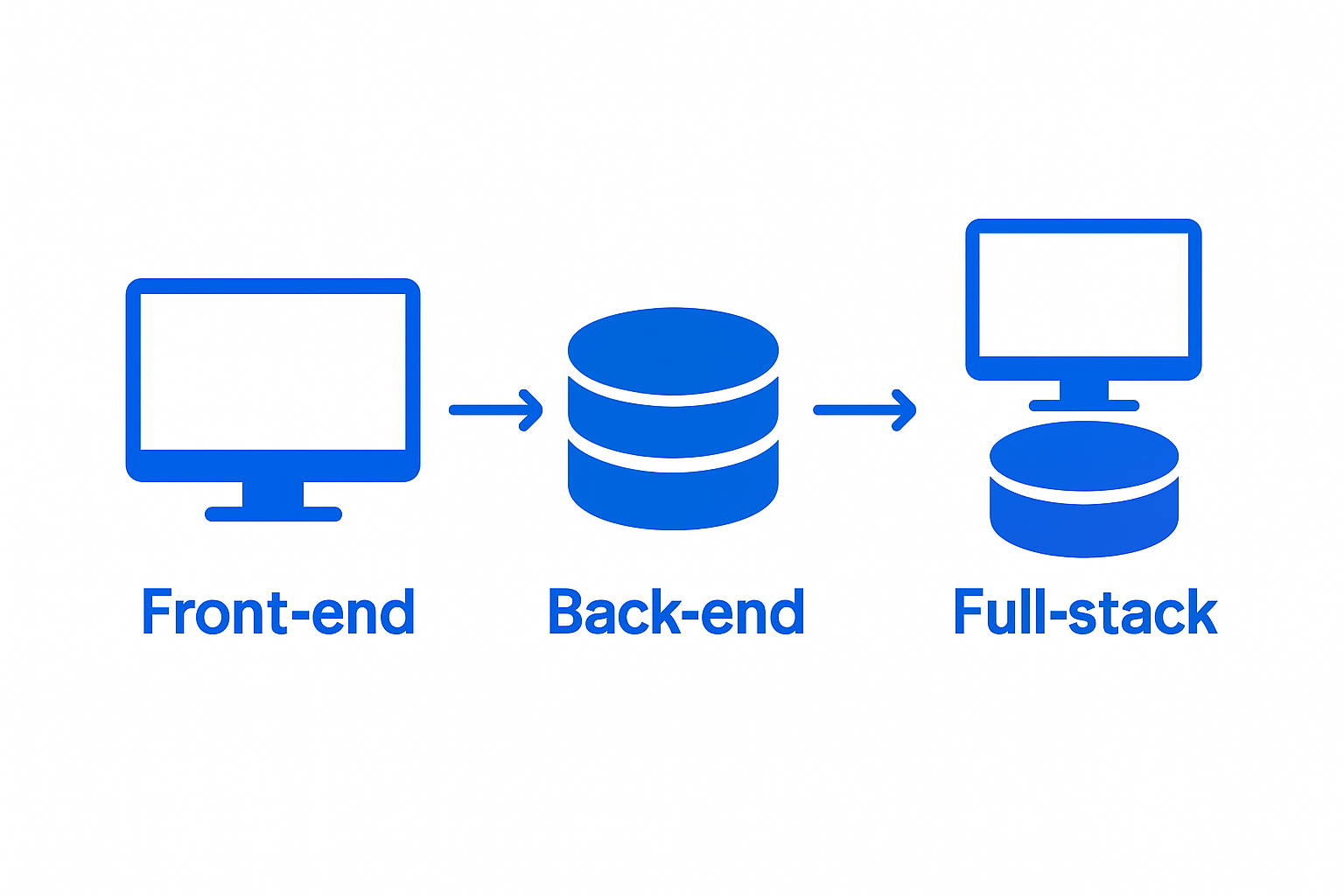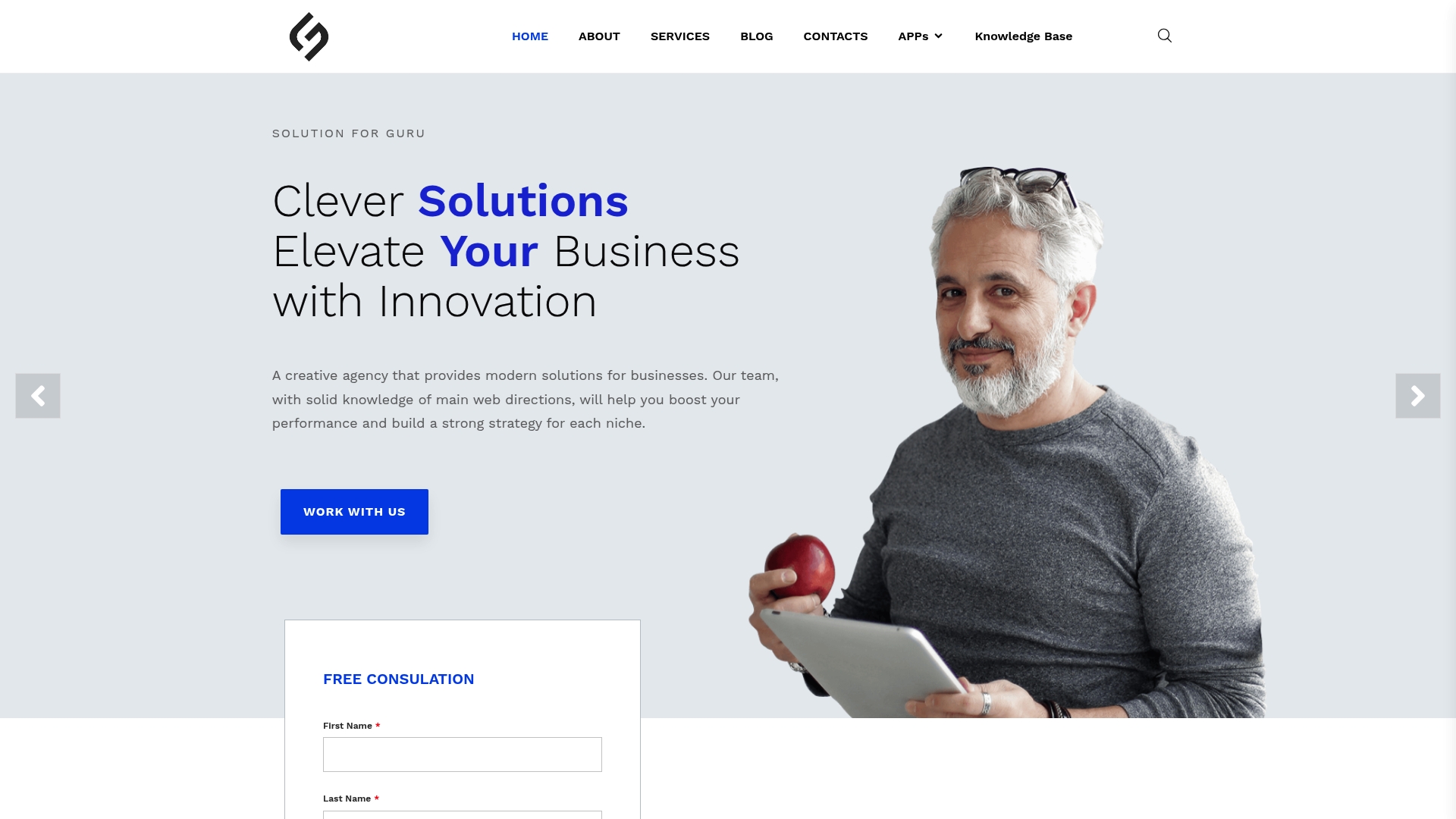Understanding Web Development Essentials for Businesses

Web development shapes nearly everything you see and do online. Nearly 80 percent of Americans interact with the web multiple times each day, whether shopping, searching, or streaming. Most people think it is just about making websites look nice. The reality is web development is the hidden force that connects you with services, creates powerful business tools, and unlocks new possibilities with every line of code.
Table of Contents
- What Is Web Development? Defining The Core Concepts
- Why Web Development Matters For Your Business Success
- How Web Development Works: The Key Technologies Involved
- Understanding The Role Of User Experience In Web Development
- Exploring The Future Of Web Development: Trends And Innovations
Quick Summary
| Takeaway | Explanation |
|---|---|
| Invest in Professional Web Development | A well-developed website is crucial for establishing business credibility and reaching a wider audience. |
| Prioritize User Experience | Focus on intuitive design and ease of use to enhance user engagement and satisfaction. |
| Leverage Core Technologies | Master HTML, CSS, JavaScript, and back-end languages for effective web solutions. |
| Adapt to Emerging Trends | Stay updated with innovations like AI and progressive web apps to maintain a competitive edge. |
| Integrate Security Measures | Implement robust security protocols to protect user data and ensure trust in your web solutions. |
What is Web Development? Defining the Core Concepts
Web development represents the complex process of creating, designing, and maintaining websites and web applications that power our digital interactions. Unlike simple visual design, web development encompasses a sophisticated blend of programming, technical configuration, and strategic planning to transform conceptual ideas into functional online experiences.
The Fundamental Components of Web Development
Web development breaks down into several critical domains that work together to produce comprehensive digital solutions. These core components include:
To help you quickly compare the main domains of web development, here is a table outlining each type, its focus area, and the core technologies involved.
| Domain | Focus Area | Core Technologies |
|---|---|---|
| Front-end Development | User interface & visual elements | HTML, CSS, JavaScript |
| Back-end Development | Server-side logic & databases | Python, PHP, Ruby, Java |
| Full-stack Development | Both client-side and server-side functions | Combines front-end & back-end |

- Front-end Development: Focuses on the user interface and visual elements users directly interact with, using languages like HTML, CSS, and JavaScript
- Back-end Development: Manages server-side logic, databases, and application infrastructure, utilizing technologies such as Python, PHP, Ruby, and Java
- Full-stack Development: Integrates both front-end and back-end capabilities, enabling developers to build complete web solutions
According to Career Education Institute, web development involves creating interactive digital platforms that go beyond static information presentation, transforming how businesses communicate and engage with their audiences.
Technical Skills and Professional Requirements
Successful web development demands a robust skill set that combines technical proficiency with creative problem solving. Professionals in this field must understand:
- Programming languages and frameworks
- Responsive design principles
- Security protocols and best practices
- Performance optimization techniques
- Cross-platform compatibility strategies
Modern web development is not just about writing code but creating seamless, intuitive digital experiences that meet complex user expectations and business objectives. By integrating technical expertise with strategic thinking, web developers craft digital solutions that drive innovation and connectivity in the global marketplace.
Why Web Development Matters for Your Business Success
In today’s digital economy, web development is no longer an optional luxury but a critical strategic investment for businesses seeking sustainable growth and competitive advantage. A professionally developed website serves as the digital cornerstone of modern business operations, enabling companies to establish credibility, expand market reach, and create meaningful connections with customers.
Digital Presence and Market Expansion
Web development transforms how businesses communicate and interact with potential customers. By creating an engaging, responsive online platform, companies can:
- Reach global audiences beyond traditional geographical limitations
- Provide 24/7 accessible information about products and services
- Build brand recognition and establish professional credibility
- Generate leads and facilitate direct customer engagement
According to SCORE, having a robust online presence is crucial for small businesses to compete effectively in the modern marketplace and establish trust with potential customers.
Strategic Business Advantages
Effective web development goes far beyond simple online visibility. It represents a sophisticated approach to business strategy that integrates technology with organizational objectives. Modern websites are not just informational tools but powerful platforms for:
- E-commerce functionality
- Customer relationship management
- Data collection and analytics
- Automated marketing processes
- Brand storytelling and engagement
Learn more about digital transformation strategies that can help businesses leverage web development for comprehensive organizational growth.
Web development enables businesses to adapt quickly to changing market dynamics, providing scalable solutions that can evolve with emerging technologies and customer expectations. By investing in professional web development, companies create a flexible digital infrastructure that supports long-term strategic goals and drives continuous innovation.
How Web Development Works: The Key Technologies Involved
Web development operates through a sophisticated ecosystem of interconnected technologies that transform digital concepts into functional online experiences. This complex process involves multiple layers of programming languages, frameworks, and tools that work seamlessly to create interactive and responsive websites.
Core Programming Languages and Frameworks
At the heart of web development are fundamental programming technologies that serve different critical functions:
- HTML: Provides the structural foundation of web pages, defining content and layout
- CSS: Manages visual design and styling, controlling how content appears to users
- JavaScript: Enables interactive and dynamic elements, creating responsive user experiences
- Backend Languages: Python, PHP, Ruby, and Java manage server-side logic and database interactions
According to Mozilla Developer Network, these technologies form the backbone of modern web development, enabling developers to create complex digital platforms with sophisticated functionality.
Below is a summary table highlighting the fundamental programming languages and their primary roles as discussed in the section.
| Technology | Primary Role |
|---|---|
| HTML | Structuring content and web page layout |
| CSS | Managing visual design and appearance |
| JavaScript | Creating interactivity and dynamic behavior |
| Python | Back-end server logic and database management |
| PHP | Server-side scripting and dynamic content |
| Ruby | Server-side logic and web application development |
| Java | Back-end logic and enterprise web solutions |
Web Development Architecture and Infrastructure
Web development encompasses more than just coding. It involves a comprehensive approach to designing, building, and maintaining digital platforms that meet specific business requirements:
- Server configuration and management
- Database design and optimization
- Security protocol implementation
- Performance monitoring and optimization
- Content management system integration
Learn more about digital transformation strategies that leverage these technological foundations to drive business innovation.
Successful web development requires a holistic understanding of how different technologies interact. Developers must carefully balance technical complexity with user experience, ensuring websites are not only functional but also intuitive, fast, and secure. By mastering these key technologies, businesses can create powerful digital solutions that adapt to evolving technological landscapes and user expectations.
Understanding the Role of User Experience in Web Development
User experience (UX) represents the critical bridge between technological functionality and human interaction in web development. It goes beyond aesthetic design, focusing on creating digital environments that are intuitive, accessible, and genuinely engaging for users across diverse platforms and devices.
The Fundamental Principles of UX Design
Effective user experience design centers on understanding and anticipating user needs, behaviors, and expectations. Successful UX strategies incorporate:
- Intuitive navigation and information architecture
- Responsive and adaptive design across devices
- Clear and meaningful visual hierarchies
- Seamless interaction flows
- Accessibility for users with diverse abilities
According to Digital.gov, user experience is fundamentally about creating digital services that meet user needs efficiently and effectively, transforming complex technological systems into human-centered solutions.
Strategic UX Considerations for Businesses
Web development must prioritize user experience as a core strategic objective, not an afterthought. This approach involves:
- Conducting comprehensive user research
- Creating detailed user personas
- Implementing iterative design and testing processes
- Measuring user engagement and satisfaction metrics
- Continuously refining digital interfaces based on user feedback
Explore digital customer experience insights that can help businesses develop more user-centric web solutions.
Ultimately, exceptional user experience transforms websites from mere information repositories into dynamic, interactive platforms that connect businesses with their audiences. By placing human interaction at the center of web development, companies can create digital experiences that are not just functional, but memorable and meaningful.

Exploring the Future of Web Development: Trends and Innovations
Web development stands at the precipice of a technological revolution, with emerging innovations poised to fundamentally transform how businesses interact with digital platforms. The landscape of web technologies is rapidly evolving, driven by exponential advancements in artificial intelligence, user experience design, and computational capabilities.
Emerging Technological Frontiers
The next generation of web development will be characterized by technologies that blur the lines between digital and physical experiences. Key innovations include:
- Artificial Intelligence Integration: Advanced machine learning algorithms enabling personalized user experiences
- Progressive Web Applications: Seamless mobile and desktop experiences that function like native applications
- Voice and Conversational Interfaces: Enhanced interaction methods beyond traditional click-based navigation
- Decentralized Web Technologies: Blockchain and distributed systems transforming data security and user privacy
According to GeeksforGeeks, these technological trends are not just incremental improvements but represent fundamental shifts in how digital platforms are conceptualized and constructed.
Strategic Implications for Businesses
Successful web development will increasingly require businesses to adopt a forward-thinking approach that anticipates technological shifts:
- Continuous learning and skill adaptation
- Investment in flexible, scalable technological infrastructure
- Prioritizing user-centric design and experience
- Embracing cross-platform and device-agnostic development
- Integrating cybersecurity as a core design principle
Explore the future of technological innovation and how it intersects with web development strategies.
The future of web development is not just about technological capability, but about creating intelligent, adaptive digital ecosystems that anticipate and respond to user needs with unprecedented precision and creativity. Businesses that embrace these emerging trends will position themselves at the forefront of digital innovation, transforming technological potential into tangible competitive advantage.
Turn Web Development Complexity Into Business Growth
Struggling to connect the dots between technical web development and your business success? Many businesses face challenges building digital platforms that are not only functional but also deliver exceptional user experience and drive results. As highlighted in the article, successful web development is more than just coding. It requires strategic thinking, intuitive UX, and a focus on business objectives. Your journey to digital excellence does not have to be complicated.
Review practical insights in our General Info Hub and see how modern technologies and best practices can work for your unique needs.

Experience the difference with Solution4Guru.com. Our experts deliver tailored web solutions that bring your vision to life, from UI/UX design to ongoing performance optimization and digital transformation strategies. Ready to create an engaging, secure, and high-performing digital presence? Contact us today for a free consultation and start building your competitive advantage now.
Frequently Asked Questions
What are the main components of web development?
Web development consists of three main components: front-end development, which involves user interface and visual elements; back-end development, which manages server-side logic and databases; and full-stack development, which encompasses both front-end and back-end capabilities.
Why is web development important for businesses?
Web development is crucial for businesses because it helps establish a digital presence, allowing companies to reach global audiences, build brand recognition, and engage customers effectively. A well-developed website can serve as a powerful tool for generating leads and facilitating communication.
What skills are essential for a web developer?
Essential skills for web developers include proficiency in programming languages like HTML, CSS, and JavaScript, as well as knowledge of back-end technologies such as Python or PHP. Additionally, developers should be familiar with responsive design, security best practices, and performance optimization techniques.
How does user experience (UX) impact web development?
User experience (UX) is critical in web development as it focuses on creating intuitive and accessible digital environments. Prioritizing UX ensures that websites are user-friendly, engaging, and meet user needs effectively, transforming digital interactions into meaningful experiences.



